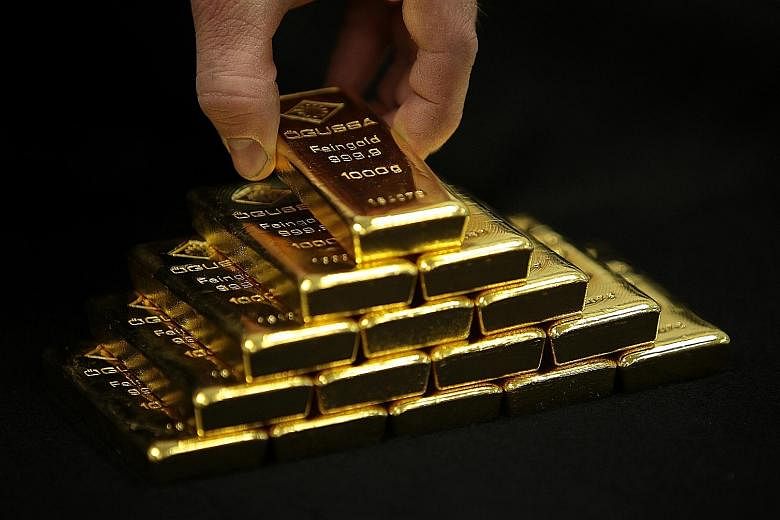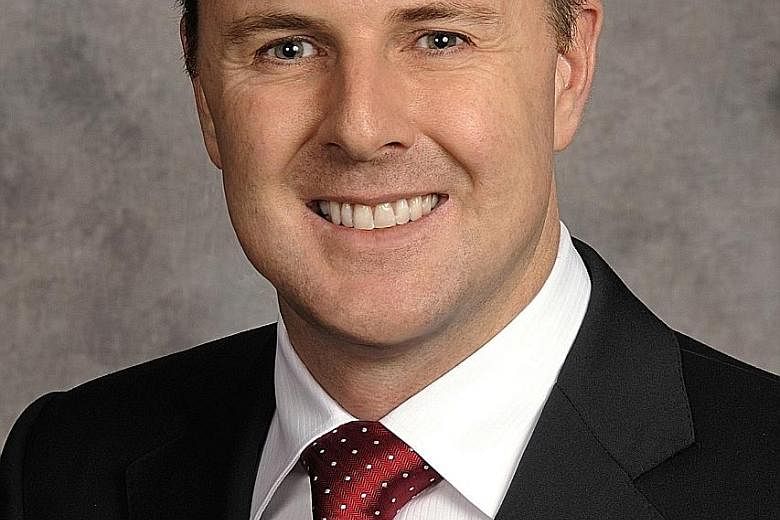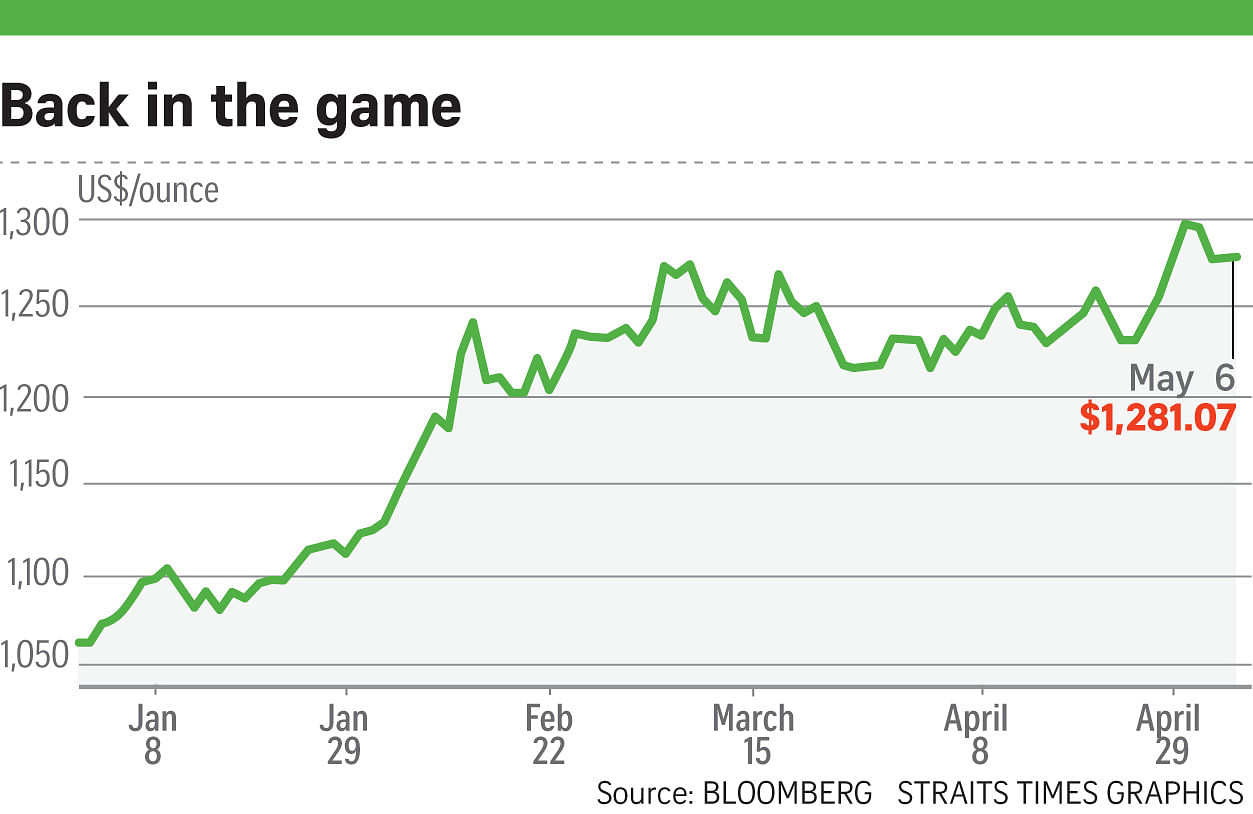Amid a sluggish global economy and with mainstream investment assets such as equities and bonds performing poorly, gold seems to have recovered some of its lustre.
Gold spot prices, at about US$1,281 an ounce as at Friday, have surged nearly 20 per cent since the start of this year. It also clocked its biggest quarterly gain since the third quarter of 1986.
While gold prices are still nowhere near US$1,880, last seen in 2011, they are still up sharply from the six-year lows of US$1,051 last December.
Market watchers and analysts agree that the tide has turned and that now could be a good time for investors to return to the gold market.
"In the past four years, there have been four factors that negatively impacted the gold price - the strength of the US dollar, the continued absence of inflation in the United States, the extraordinary strength of US equities and investors looking for risk on trades driven by easy money," said Mr Robin Tsui, vice-president at State Street Global Advisors.
"These factors have all changed."
GATHERING GOOD MOMENTUM
The goings-on in the US, clearly, have been central to gold's stellar performance.
While the market started the year in trepidation over impending interest rate hikes, expectations have tapered off in recent months, given the continued uncertainties in the global financial market, Mr Tsui, also the firm's exchange traded fund (ETF) gold specialist, told The Sunday Times.
The pause on interest rates has put downward pressure on US treasury yields and the US dollar, which, in turn, made gold "more attractive as an investment", he said.
Mr Ole Hansen, Saxo Bank's head of commodity strategy, said another key driver for gold has been the negative interest rates set by various central banks across the world.
"With bond yields being negative, the opportunity cost of holding metals is either gone or has been sharply reduced," he said.
As concerns over global economic growth and financial stability persist, gold has reprised its role as a safe haven asset, with capital flows fast returning to the market.
"Gold remains a valuable hedge against the US dollar," said Allocated Bullion Solutions chief executive Seamus Donoghue, pointing to a resurgence in demand for gold ETFs in particular.
World Gold Council data shows that gold-backed ETFs posted their strongest quarter on record during the first three months this year as demand rose by 363 tonnes, led by the US, Europe and China.
At the same time, non-commercial net long positions on Comex, the world's largest futures exchange, grew the most since 2009.
"As central banks around the world embark on and expand unconventional monetary policy, the pros of holding gold increase," said Mr Donoghue.
"Gold is a hedge against the US dollar or local currency weakness. It is also a store of value in a world of negative interest rates. This significantly reduces or eliminates the traditional argument against gold that it does not have a yield."
A SUSTAINABLE RALLY?
Gold prices will likely continue to gain ground in the coming months, in the light of weak global cues.
"The outlook for gold for the year is largely predicated on how global growth performs and on the pace of rate hikes by the US Federal Reserve," said Mr Barnabas Gan, economist at OCBC Bank.
"Given that these two drivers have been favourable for gold prices at this juncture, the bullion may well see substantial support above its US$1,200 per ounce handle in the second quarter of 2016."
But Mr Gan also believes the weakness in the greenback is transient, given the possibility of two interest rate hikes taking place this year, with the first likely to come in June or July. "Should this scenario come to pass, the current gold rally should lose traction in the second half of the year."
He expects gold prices to slip back to US$1,100 an ounce by the end of the year, on the back of improving economic sentiment.
On the other hand, Mr Tsui believes gold prices could hit the US$1,350 to US$1,375 range by the end of December, given that there is more upside to gold prices than downside risks.
A sustained rally in the US dollar, for instance, is unlikely, he said.
This is because central banks are trying to depreciate their currencies to drive domestic growth, while investors continue to look for risk-off trades and assets such as gold amid global uncertainties.
Mr Benjamin Wong, senior investment strategist at DBS Group Wealth Management and Private Banking, similarly notes that gold has reached a "major upward turning point".
"Gold is attractive in a market that is broadly de-risking," he said, adding that the floor price for the precious metal has been consistently lifted as prices continue to put up a positive performance.
"Investors should consider looking positively at accumulation as prices dip towards US$1,218. For size, most bullish gold cycles can go on for 60 months or so."
FOR THE LONGER HAUL
Beyond the near-term drag from the repricing of Fed rate hikes, Mr Wayne Gordon, executive director at UBS Wealth Management, believes gold will pick up from there.
"We expect US 10-year treasury yields to remain low. Even as the Fed lifts the short-term rate, we see the yield curve flattening. This scenario is not necessarily negative for gold prices," he said.
"Additionally, we expect as crude oil prices recover, so will inflation expectations. This is also a supportive driver for gold."
A balanced investment portfolio, added Mr Gordon, should hold some gold, which offers "some insurance to any adverse market risks", particularly during periods of negative real rates and heightened financial market volatility.
"Gold performs particularly well during periods of declining or negative real interest rates, whether due to high inflation or low nominal interest rates."
HOW TO INVEST IN GOLD
One of the easiest and most popular ways to invest in gold is to buy phy- sical gold bars or coins, which are usually available through specialised retailers or banks.
Gold vending machines set up in shopping malls here, such as those by home-grown firm Asia Gold ATM, can also dispense gold ingots, while jewellers, of course, offer a wearable form of the yellow metal.
Mr Brian Lan, managing director of GoldSilver Central, recommends that 5 to 10 per cent of an investment portfolio be made up of physical precious metals, including gold.
"Gold is a wholly owned asset that does not have a counterparty risk," he noted. "It is a tangible asset, liquid and has intrinsic value that investors trust. The allure of gold has been proven over centuries."
Still, moderation is key, stressed Mr Lan, adding that investors should not invest too heavily in gold as the commodity remains in surplus currently.
Investors can also store their gold in vaults operated by several bullion banks, such as ANZ Bank, Credit Suisse, DBS Bank and UBS.
Equally sought after are gold ETFs, which come without the hassle and additional storage costs of holding physical gold, and provide a "very transparent and liquid vehicle for gold investing", said Mr Donoghue.
A spokesman for United Overseas Bank said gold-linked bank accounts - where users can buy and sell gold without physical delivery - are gaining traction among investors, especially as younger consumers are increasingly showing interest in gold products.







